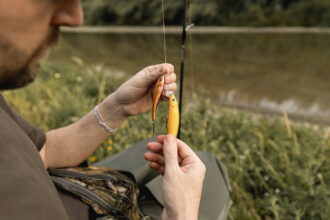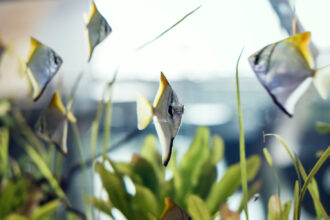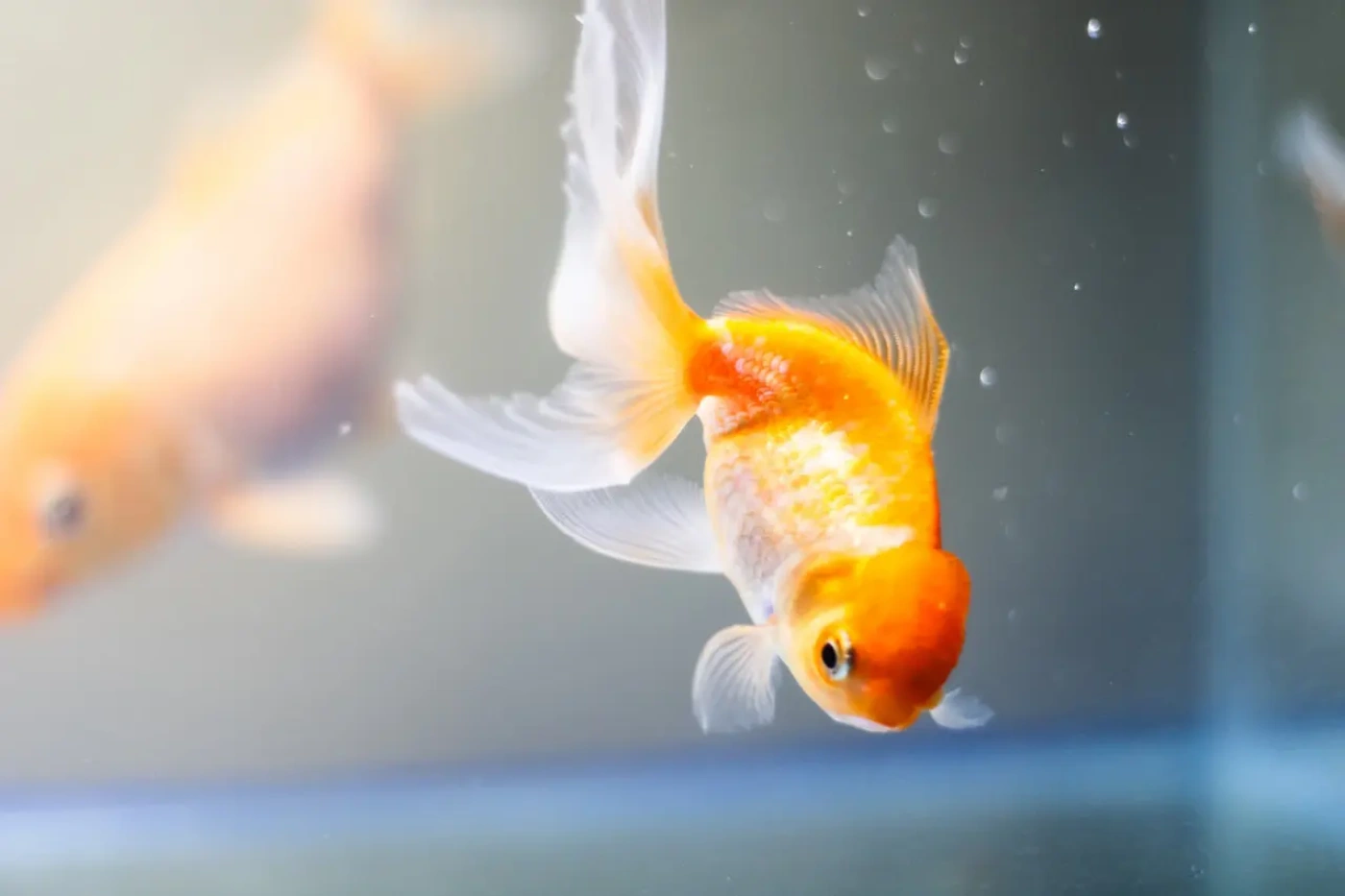Goldfish, being popular and beautiful freshwater fish, are often kept in home aquariums. While they can thrive on their own, many aquarium enthusiasts enjoy adding tank mates to create a dynamic and diverse aquatic environment. However, not all fish are suitable companions for goldfish, as their specific care requirements and temperaments need to be considered. In this article, we will explore goldfish tank mates and provide guidance on finding compatible companions for your aquarium.
Before introducing new fish to your goldfish tank, it’s important to understand the specific needs of goldfish. They are cold-water fish, preferring temperatures between 65-75°F (18-24°C). Goldfish produce more waste than other species, necessitating a spacious tank with efficient filtration to maintain water quality. Additionally, goldfish have hearty appetites, so providing them with a balanced diet is crucial for their health.
When selecting tank mates for your goldfish, consider the following factors:
- Size: Goldfish can grow quite large, so it’s important to choose tank mates that can coexist with them comfortably. Avoid small fish that can be seen as potential prey or may be intimidated by the goldfish’s size.
- Water Parameters: Goldfish prefer cooler water compared to tropical fish. Ensure that the water parameters required by the potential tank mates are compatible with those of goldfish. It’s crucial to maintain stable water conditions to promote the health of all the inhabitants.
- Temperament: Goldfish are generally peaceful but can be slightly aggressive during feeding. Avoid introducing aggressive or fin-nipping fish that may harass or harm the goldfish. Look for peaceful and compatible species that won’t cause stress or aggression in the tank.
- Compatibility: Some fish species have specific compatibility requirements. Research the specific needs and behaviors of the potential tank mates to ensure they are compatible with goldfish. Consider factors such as swimming levels, social behavior, and preferred tank territories.
popular goldfish tank mates that are known to be compatible:
White Cloud Mountain Minnows
White Cloud Mountain Minnows (Tanichthys albonubes) are small, colorful freshwater fish that make excellent companions for goldfish in an aquarium. Originating from the rivers and streams of China, they are known for their peaceful nature, ease of care, and ability to tolerate cooler water temperatures.
key points to know about White Cloud Mountain Minnows as goldfish tank mates:
- Size and Appearance: White Cloud Mountain Minnows are relatively small, reaching about 1.5 to 2 inches (3.8 to 5 cm) in length. They have a streamlined body with vibrant colors, including silver, gold, and hints of red on their fins.
- Temperature Tolerance: These minnows are accustomed to cooler water temperatures, making them a suitable companion for goldfish, which prefer similar conditions. They can thrive in temperatures ranging from 64-72°F (18-22°C), making them an ideal choice for unheated goldfish aquariums.
- Peaceful Nature: White Cloud Mountain Minnows are peaceful and social fish, making them compatible tank mates for goldfish. They are known for their schooling behavior, so it’s recommended to keep them in groups of at least five to provide a sense of security.
- Compatibility with Goldfish: These minnows can peacefully coexist with goldfish, as they have similar temperaments and water temperature preferences. However, due to their smaller size, it’s important to choose larger goldfish varieties that won’t mistake them for food. Avoid introducing fancy goldfish with exaggerated features, as they may have difficulty competing for food.
- Water Quality and Diet: White Cloud Mountain Minnows are relatively hardy and can tolerate a range of water conditions. However, it’s still essential to maintain good water quality in the aquarium by performing regular water changes and ensuring proper filtration. They are omnivorous and will accept a variety of foods, including high-quality flakes, pellets, and small live or frozen foods.
- Behavior and Interaction: These minnows are active swimmers and can add a lively element to your goldfish tank. They are known for their playful nature and can provide entertainment as they dart around the aquarium.
Rosy Barb
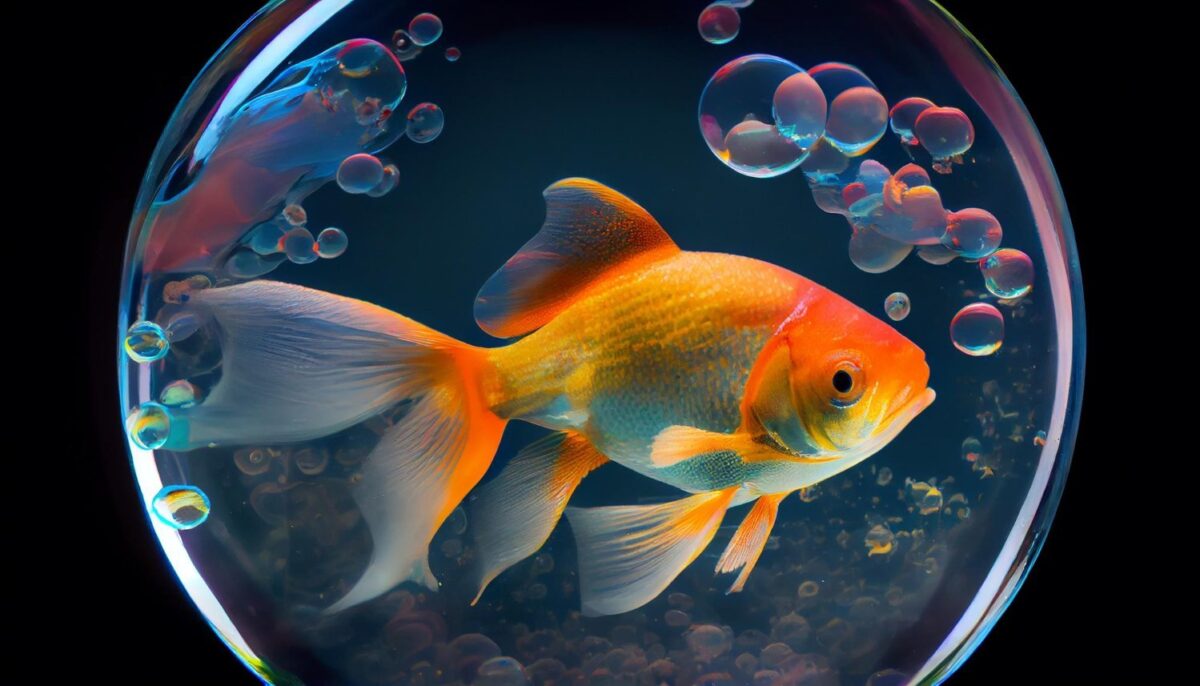
Rosy Barb (Puntius conchonius), also known as Red Barb, is a popular freshwater fish species that can make compatible tank mates for goldfish in an aquarium. These colorful and active fish are native to South Asia and are valued for their vibrant red coloration and lively behavior.
points to know about Rosy Barbs as goldfish tank mates
- Size and Appearance: Rosy Barbs are relatively small fish, growing to an average length of 2 to 3 inches (5 to 7.5 cm). They have a slender body shape with bright red coloration, hence their name. Males often display a deeper red hue and develop elongated fins during breeding season.
- Water Temperature: Rosy Barbs prefer slightly warmer water compared to goldfish. They thrive in temperatures ranging from 72-79°F (22-26°C). Therefore, it is important to ensure that the water temperature in the aquarium is suitable for both species. A well-regulated heater may be necessary to maintain the preferred temperature for Rosy Barbs.
- Compatibility: Rosy Barbs generally have a peaceful temperament, which makes them compatible with goldfish. However, it’s crucial to consider the size difference between the two species. Goldfish can grow significantly larger than Rosy Barbs, so it’s advisable to keep larger goldfish varieties to prevent them from potentially preying on the smaller fish.
- Water Quality and Diet: Rosy Barbs are relatively hardy and adaptable to various water conditions. However, maintaining good water quality is essential for their overall health and well-being. They are omnivorous and will readily accept a variety of foods, including high-quality flakes, pellets, and live or frozen foods like brine shrimp or bloodworms.
- Behavior and Tank Setup: Rosy Barbs are active swimmers and appreciate a well-decorated tank with plenty of swimming space. Providing hiding spots, plants, and open areas for them to explore and swim freely will help create a stimulating environment. They also appreciate moderate water flow and appreciate a well-maintained aquarium with regular water changes.
- Rosy Barbs have a reputation for being prolific breeders when provided with the right conditions. If you are interested in breeding them, it is advisable to set up a separate breeding tank to create a suitable environment for spawning and raising fry.
Bristlenose Plecos
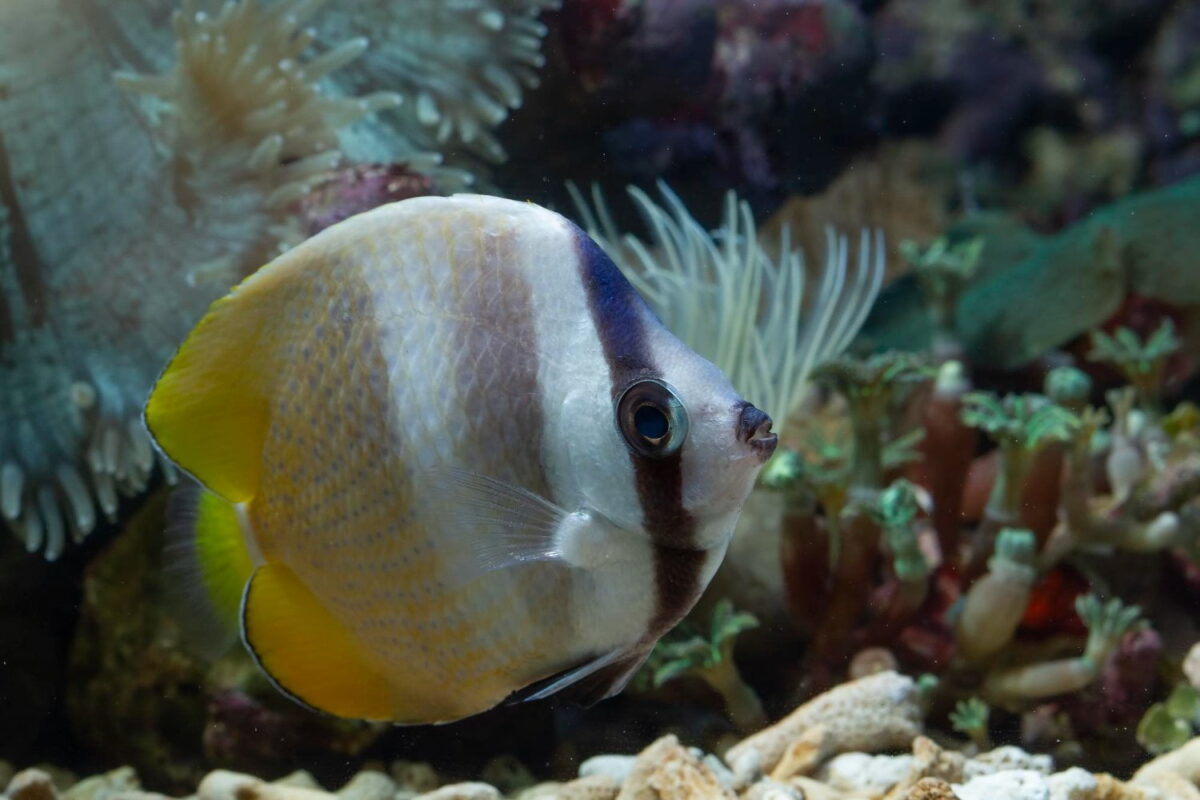
Bristlenose Plecos (Ancistrus sp.) prove to be popular and fascinating freshwater fish species, making them excellent tank mates for goldfish. These small and unique-looking catfish sport distinctive bristle-like appendages on their heads, adding an interesting visual element to any aquarium.
points to know about Bristlenose Plecos as goldfish tank mates
- Size and Appearance: Bristlenose Plecos are relatively small, typically growing to a size of 4 to 6 inches (10 to 15 cm) in length. They have a stout body with a mottled brown or black coloration that provides effective camouflage. The most prominent feature of Bristlenose Plecos is the growth of bristle-like tentacles on their snouts, especially in males.
- Compatibility: Bristlenose Plecos are generally peaceful and non-aggressive, which makes them suitable tank mates for goldfish. They are bottom-dwelling fish that spend most of their time grazing on algae and other organic matter. Their peaceful nature and preference for different areas of the tank help minimize direct competition with goldfish.
- Algae Control: One of the significant benefits of adding Bristlenose Plecos to a goldfish tank is their role in algae control. These catfish have a voracious appetite for algae and can help keep the tank clean by grazing on algae growth on surfaces, including glass, rocks, and decorations. They are especially efficient in consuming common types of algae, such as green spot algae and brown algae.
- Tank Setup: Bristlenose Plecos prefer a well-decorated aquarium with plenty of hiding spots and caves. They are nocturnal by nature and appreciate areas where they can retreat during the day. Providing driftwood or caves in the tank not only serves as hiding places but also aids in their natural behavior of rasp-grazing on wood surfaces to supplement their diet.
- Water Conditions: Bristlenose Plecos are relatively adaptable to a wide range of water conditions. However, it’s essential to maintain stable water parameters to ensure their well-being. They prefer a slightly acidic to neutral pH range of 6.5 to 7.5 and a temperature range of 72-82°F (22-28°C). Good filtration and regular water changes are essential to maintain excellent water quality.
Weather Loach
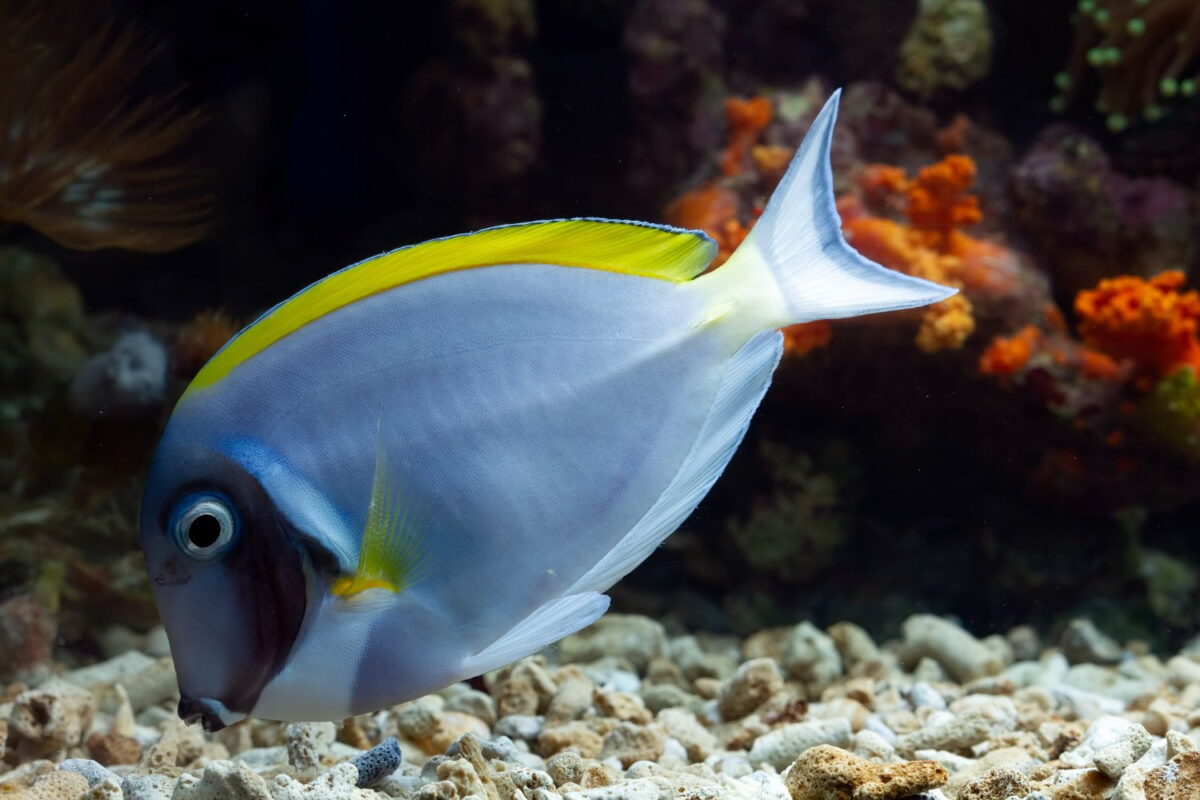
The Weather Loach (Misgurnus anguillicaudatus), commonly referred to as Dojo Loach or Pond Loach, presents a fascinating freshwater fish option that can serve as an interesting and compatible tank mate for goldfish. These loaches boast elongated bodies and possess the unique ability to detect changes in atmospheric pressure, enabling them to predict weather patterns.
points to know about Weather Loaches as goldfish tank mates
- Size and Appearance: Weather Loaches are relatively small, typically growing to a size of 6 to 10 inches (15 to 25 cm) in length. They have a slender body with a light brown or olive-green coloration and a yellowish belly. Their most distinctive feature is their long, whisker-like barbels surrounding their mouths, which they use to search for food in the substrate.
- Compatibility: Weather Loaches are generally peaceful and social fish, making them suitable tank mates for goldfish. They are known for their friendly and active nature, and they tend to swim and explore the tank’s bottom and mid-levels. Their behavior complements the goldfish’s tendency to occupy the upper areas of the tank, resulting in minimal competition for space and resources.
- Weather Loaches possess the intriguing ability to detect changes in atmospheric pressure and respond accordingly, adding to their allure. Before storms or other weather events, they often exhibit increased activity and restlessness, captivating observers. Additionally, they actively engage in burying themselves in the substrate, providing an entertaining spectacle as they wiggle and disappear into the sand or gravel.
- Tank Setup: Weather Loaches prefer a well-furnished aquarium with plenty of hiding spots, plants, and smooth substrate. They are bottom-dwelling fish that enjoy burrowing in the substrate, so it’s important to provide a soft substrate like sand or fine gravel to accommodate their natural behavior. Live plants and decorations like rocks and driftwood can provide additional hiding places and stimulate their natural instincts.
- Water Conditions: Weather Loaches are adaptable to a wide range of water conditions. They can tolerate temperatures between 64-77°F (18-25°C) and prefer a pH range of 6.0 to 8.0. It’s important to maintain good water quality with proper filtration and regular water changes to ensure their well-being.
- Diet: Weather Loaches are omnivorous and have a hearty appetite. They enjoy a varied diet consisting of sinking pellets, flakes, and frozen or live foods. They also scavenge for food in the substrate, so it’s beneficial to provide sinking foods that they can readily consume. Offering a balanced diet of high-quality fish food, including both plant-based and protein-rich options, will help keep them healthy and satisfied.
In conclusion, adding compatible tank mates to your goldfish aquarium can enhance its visual appeal and provide a more engaging environment. However, it’s crucial to choose tank mates that can coexist peacefully with goldfish and meet their specific care requirements. By considering factors such as size, water parameters, temperament, and compatibility, you can create a harmonious and thriving community in your goldfish tank. Happy fishkeeping!





